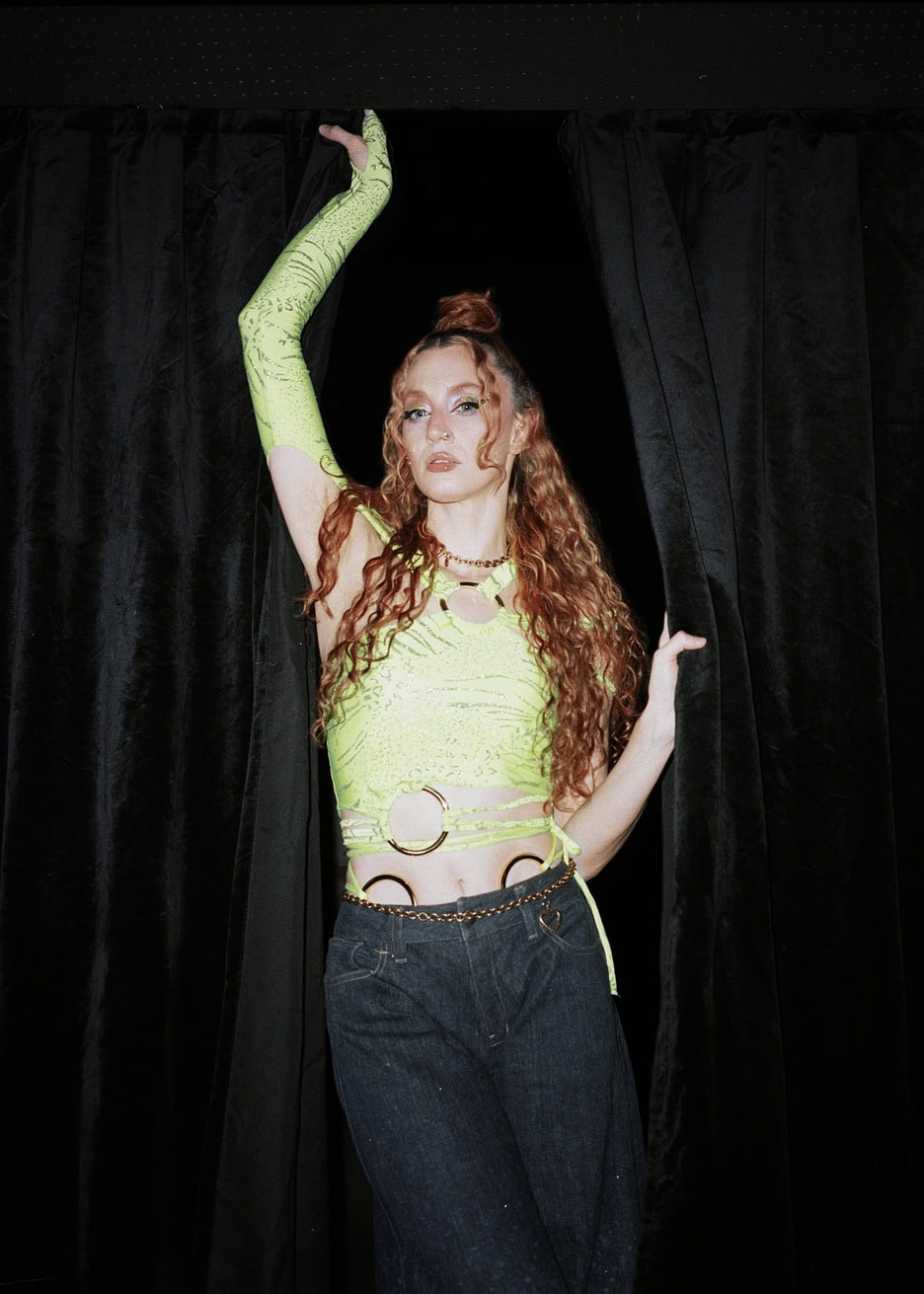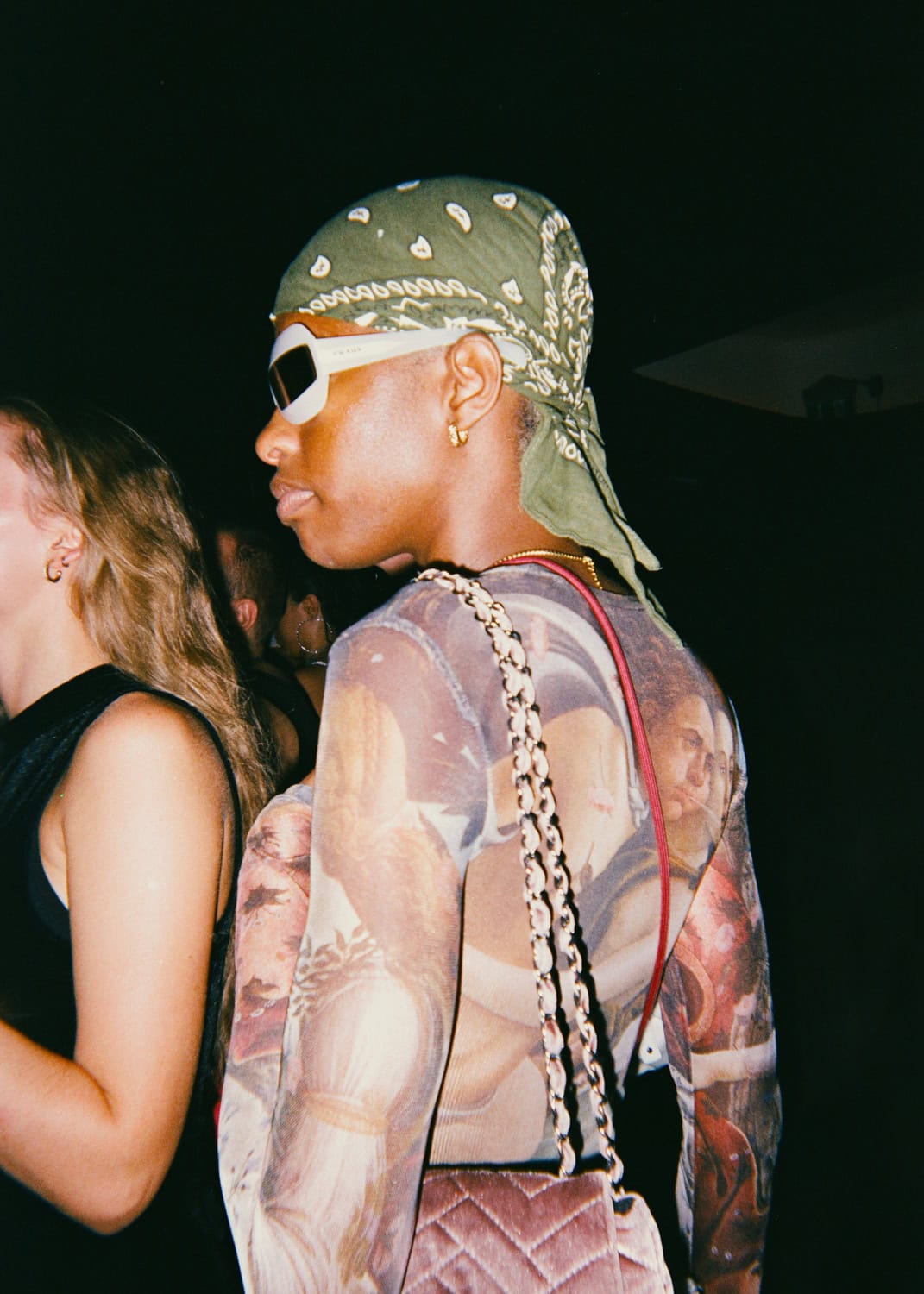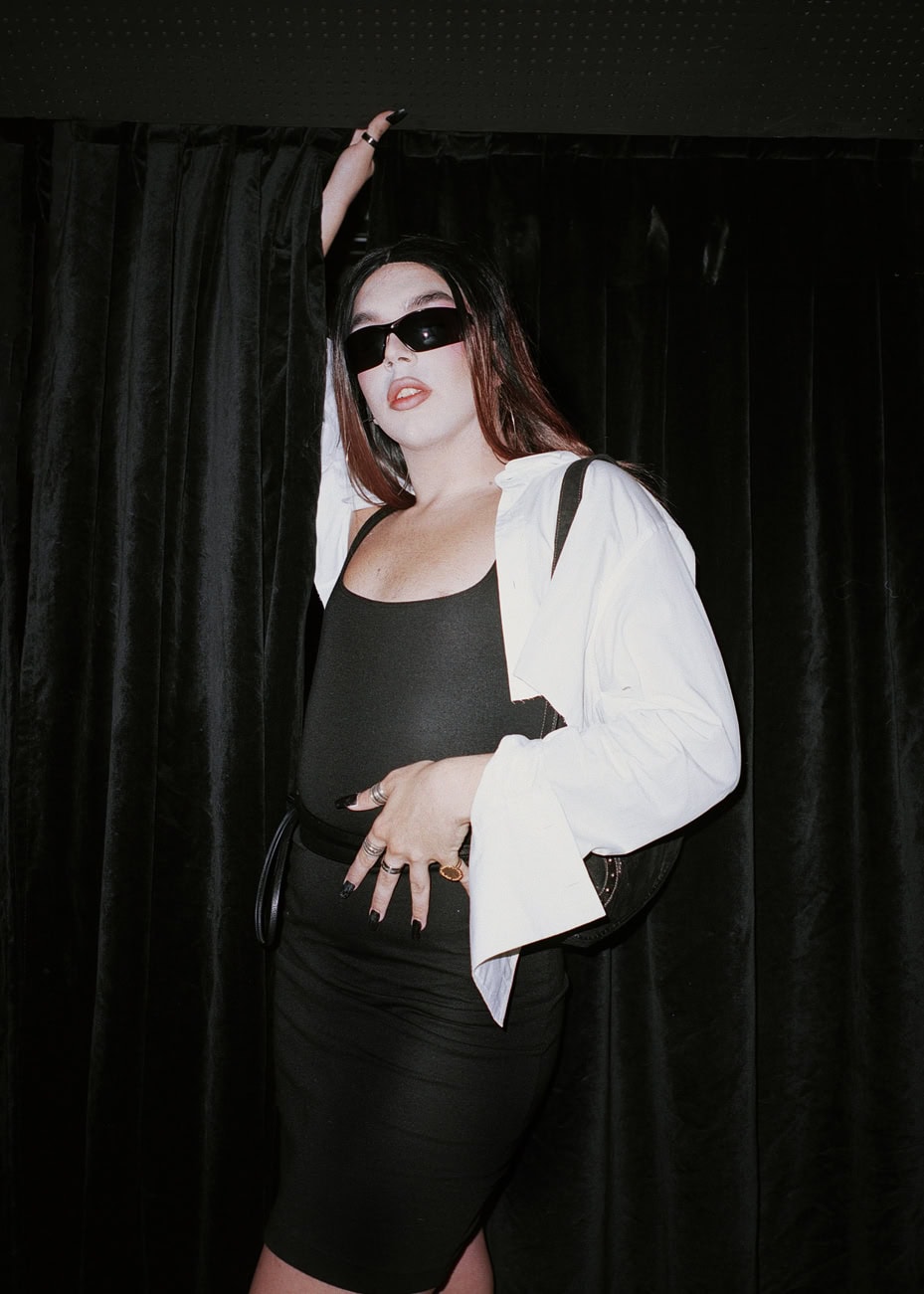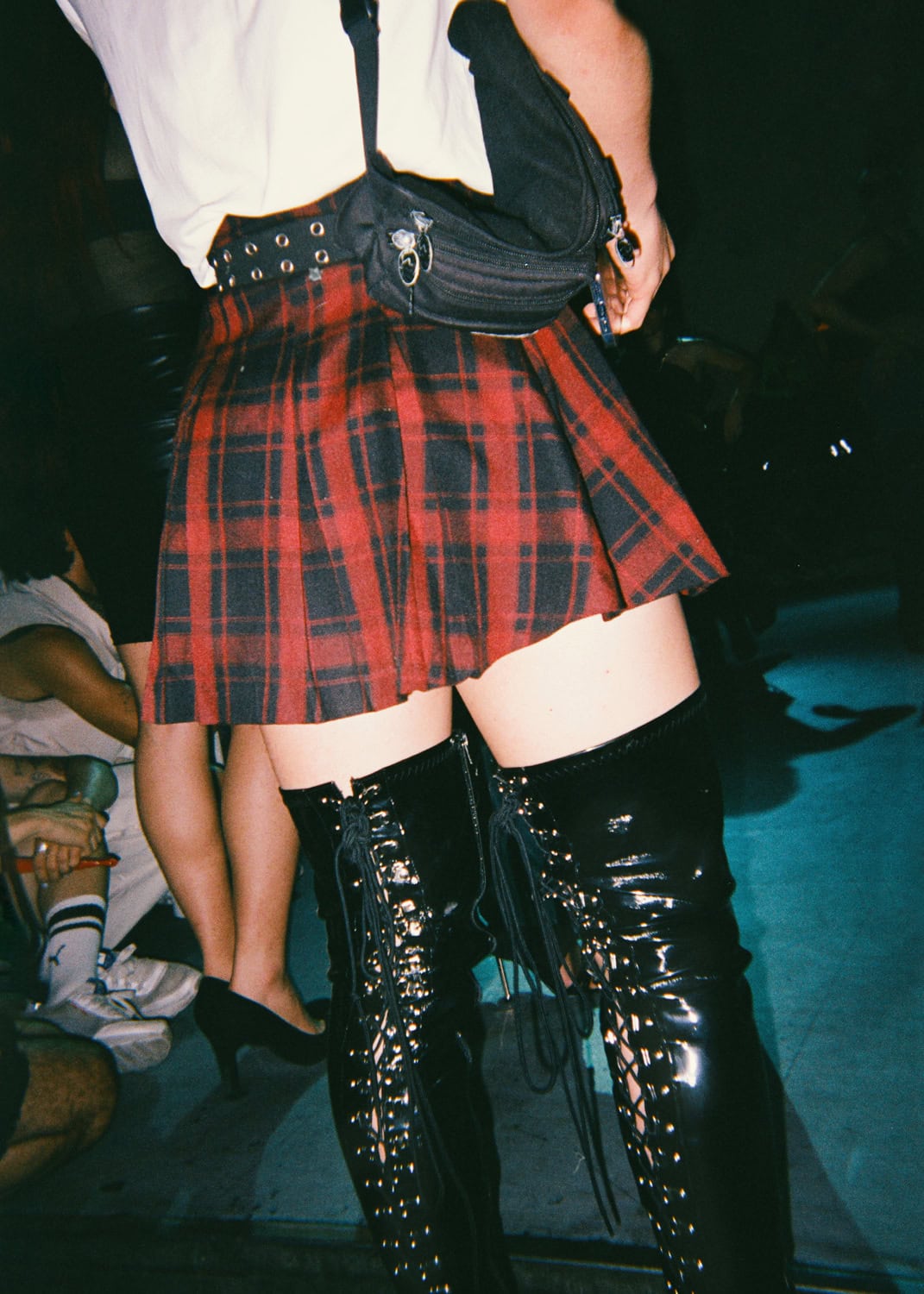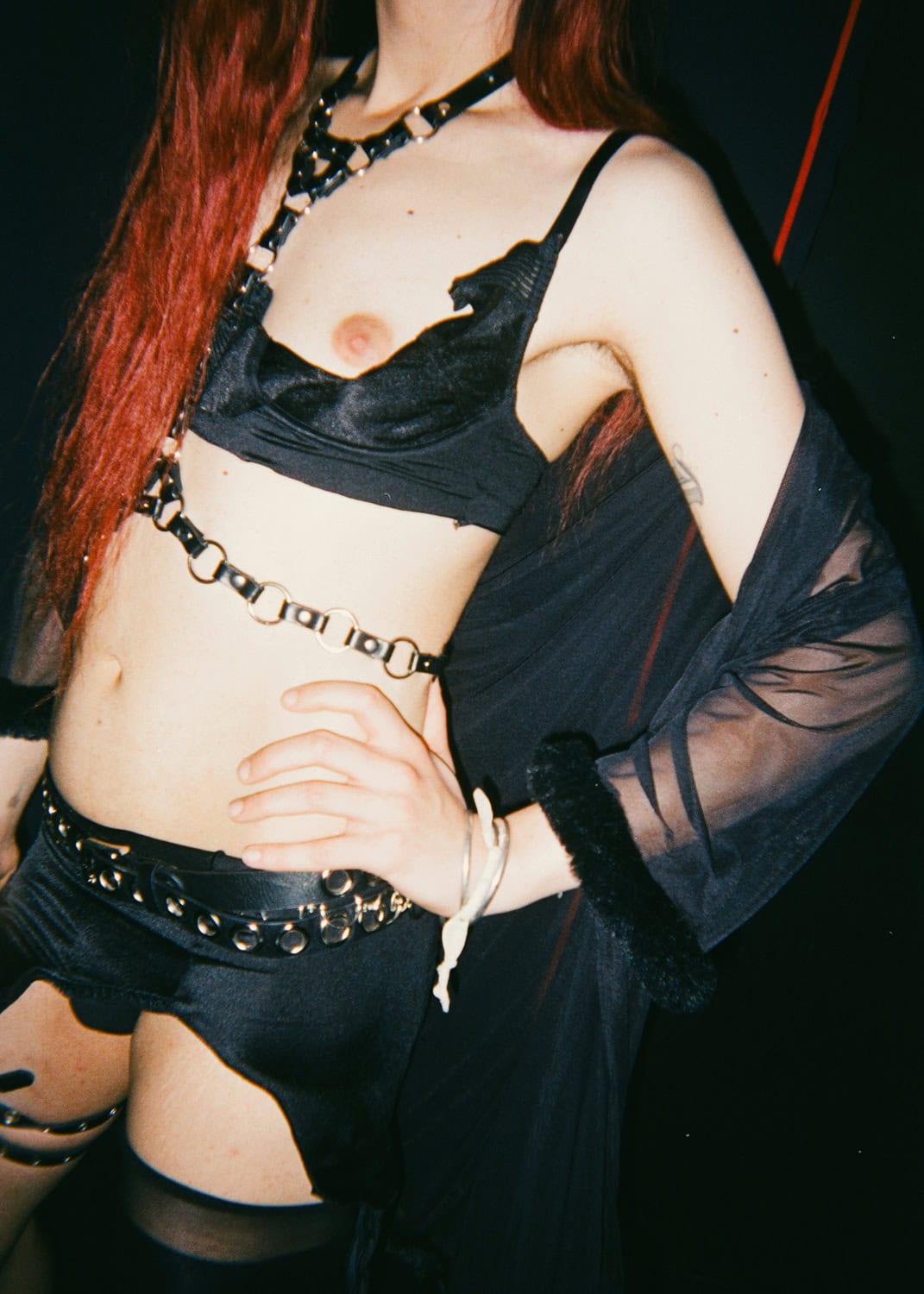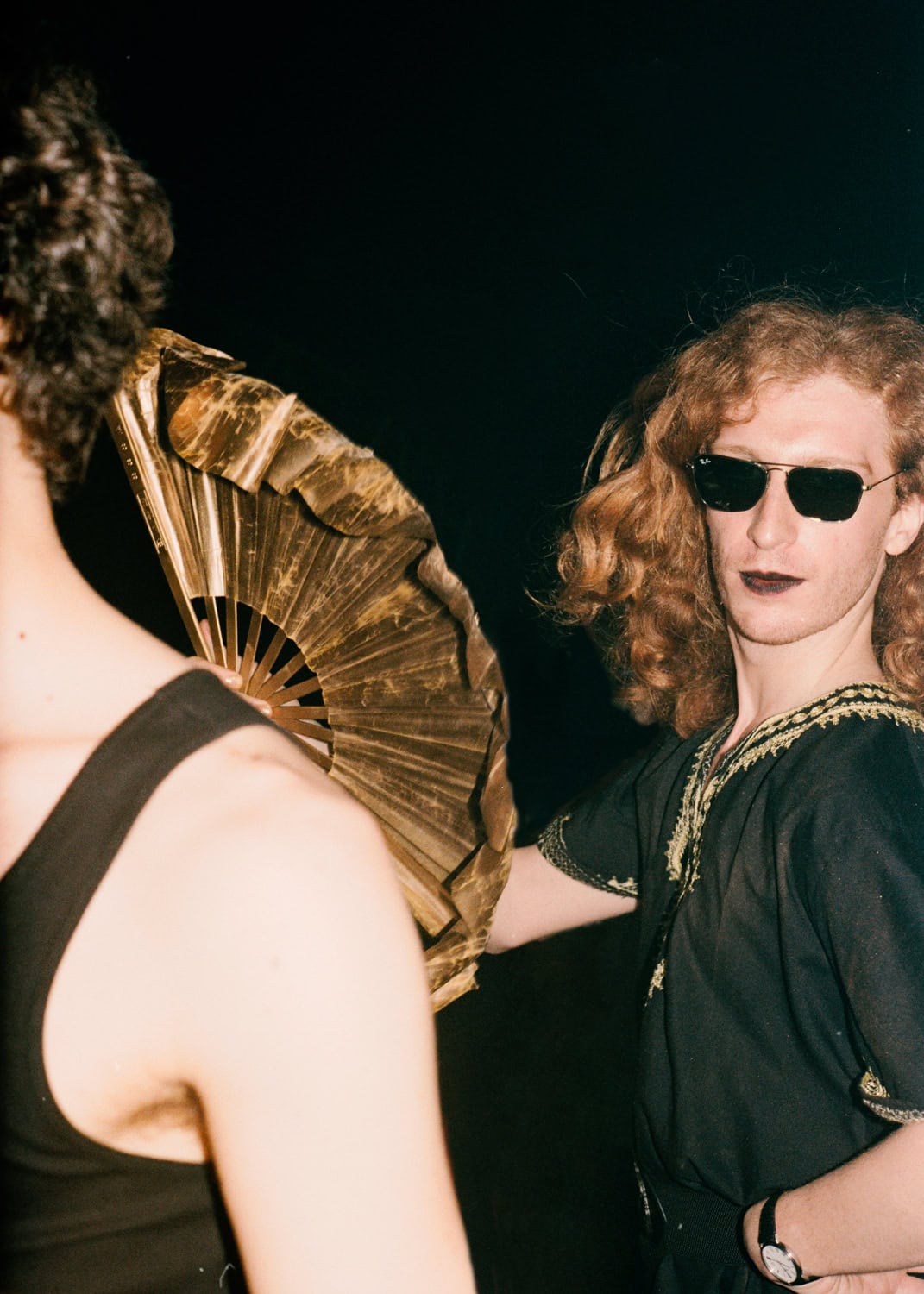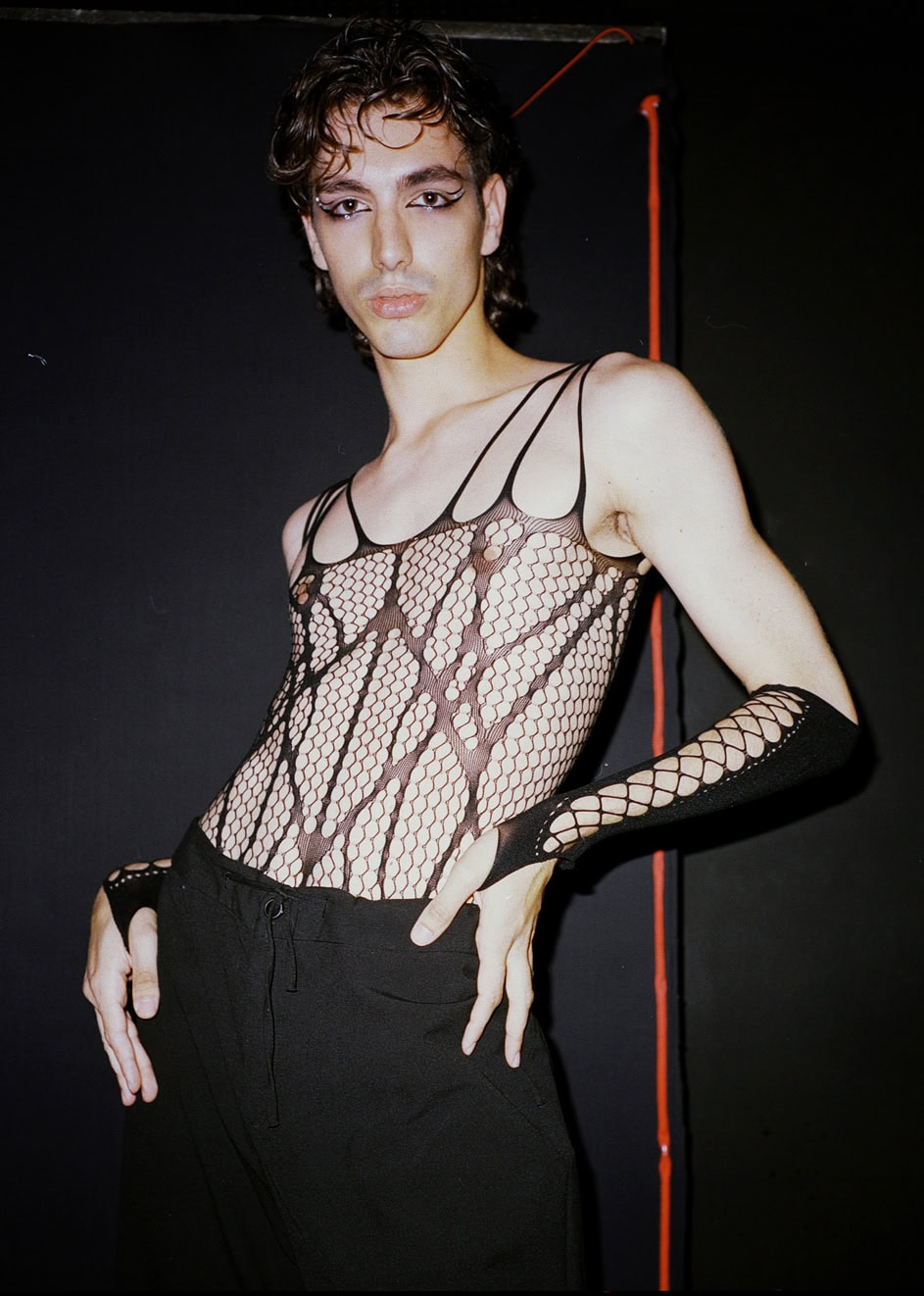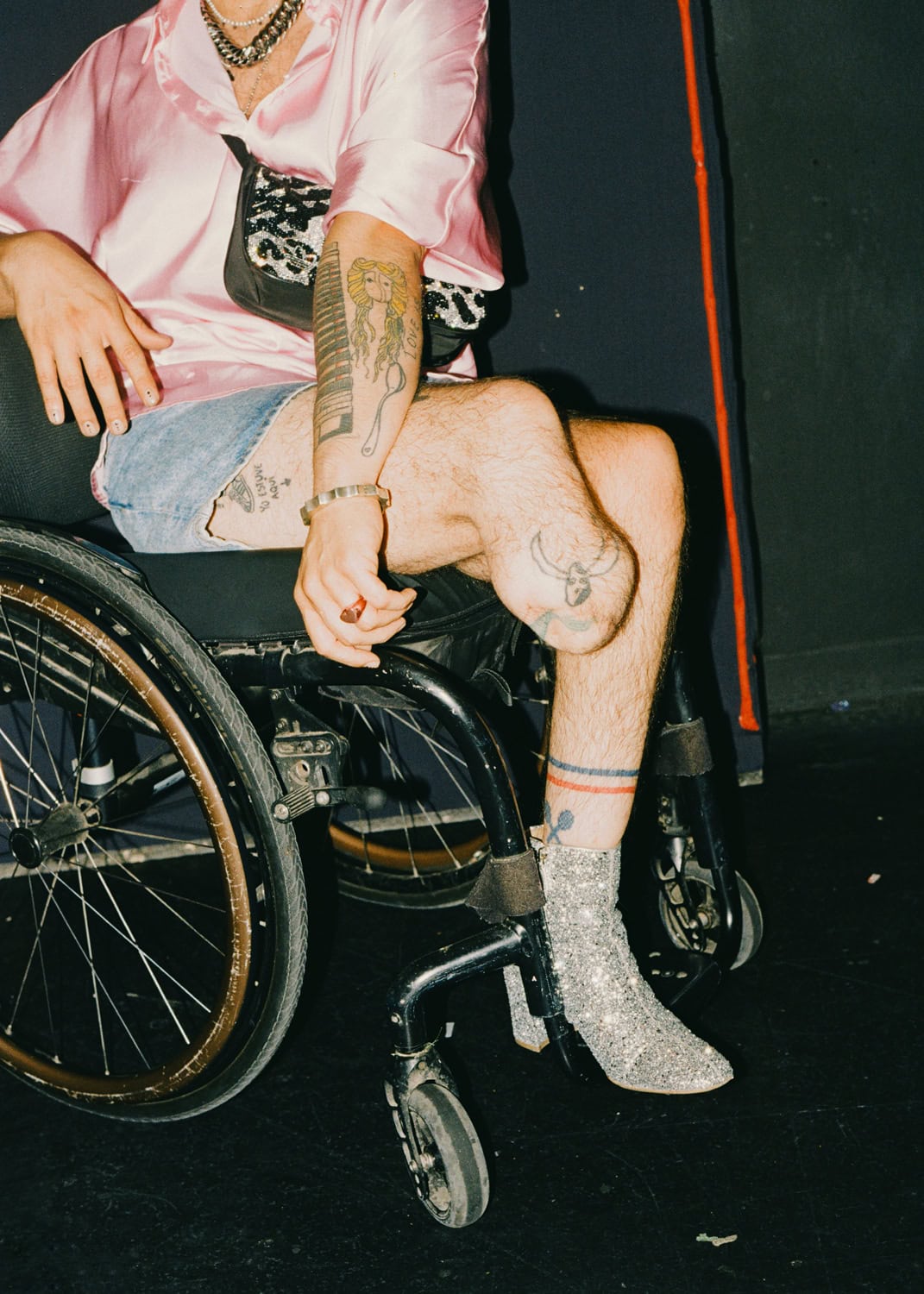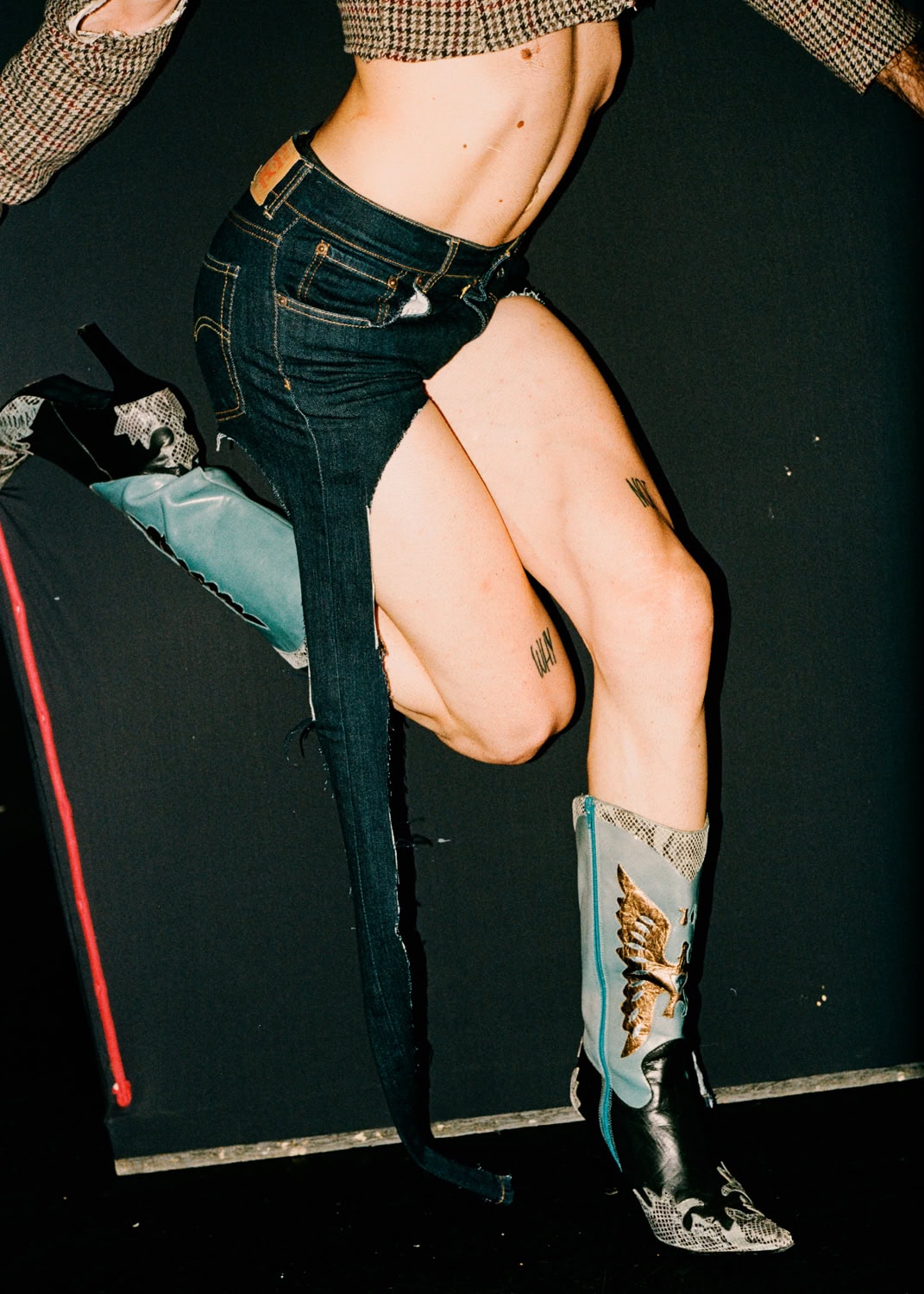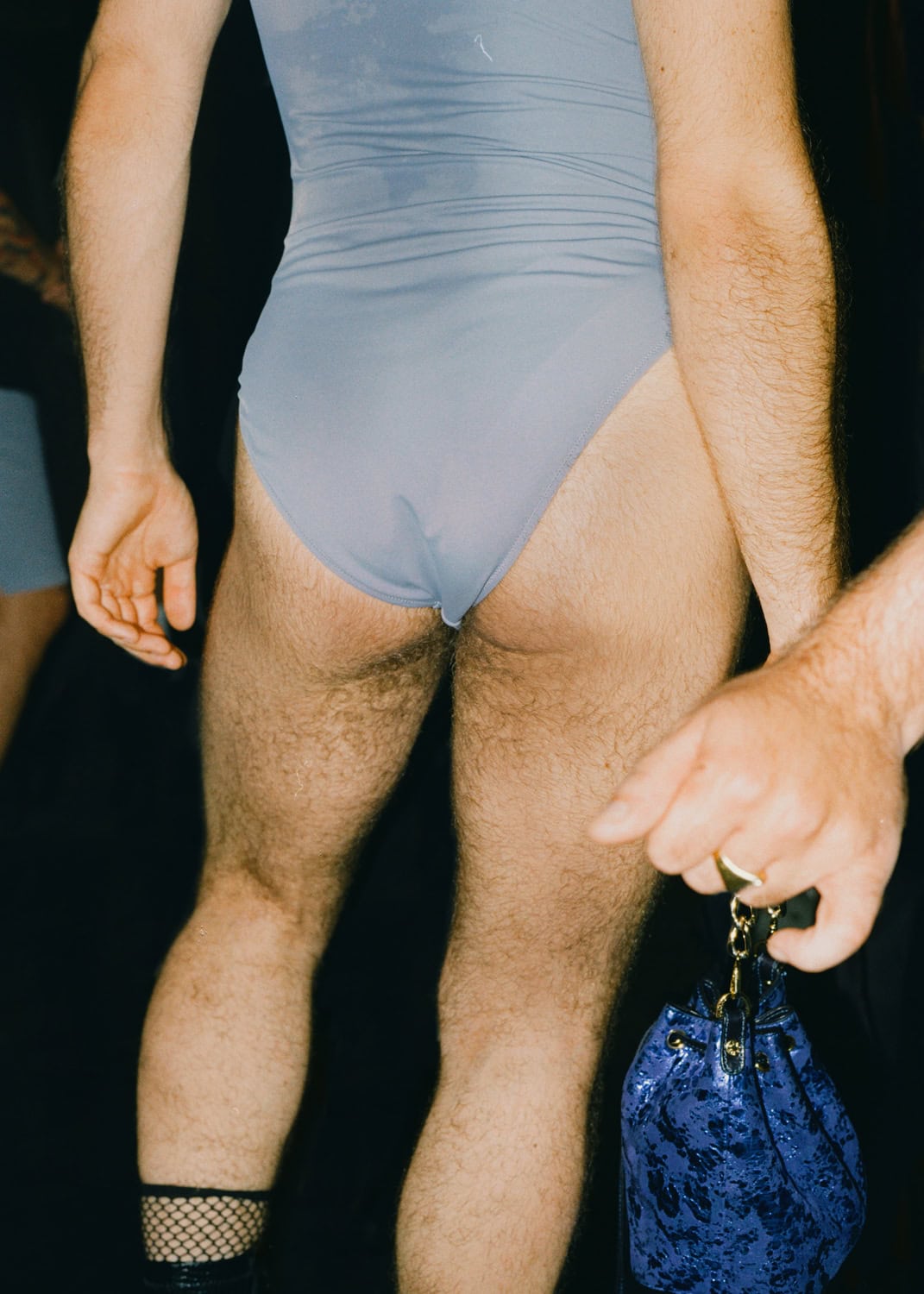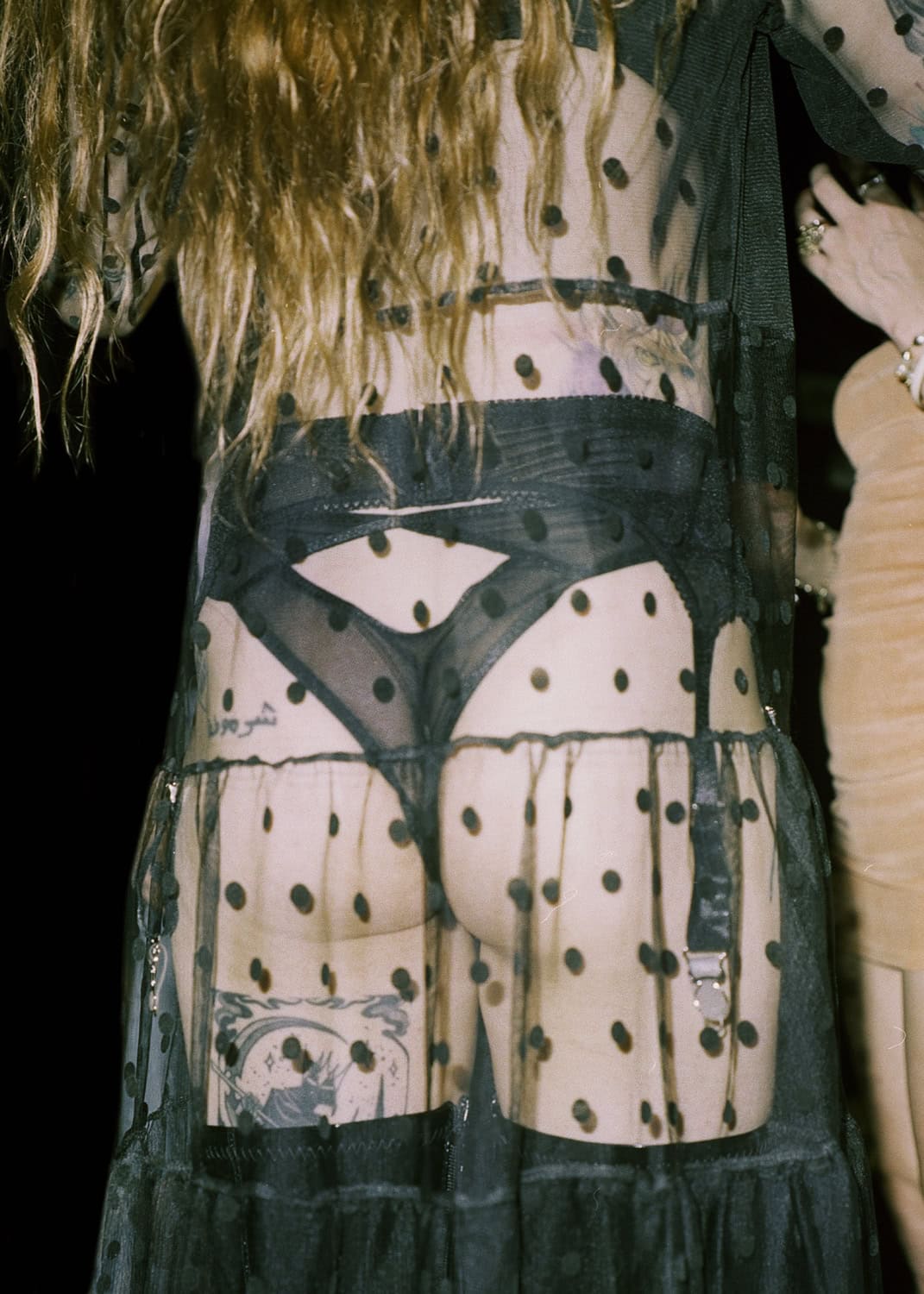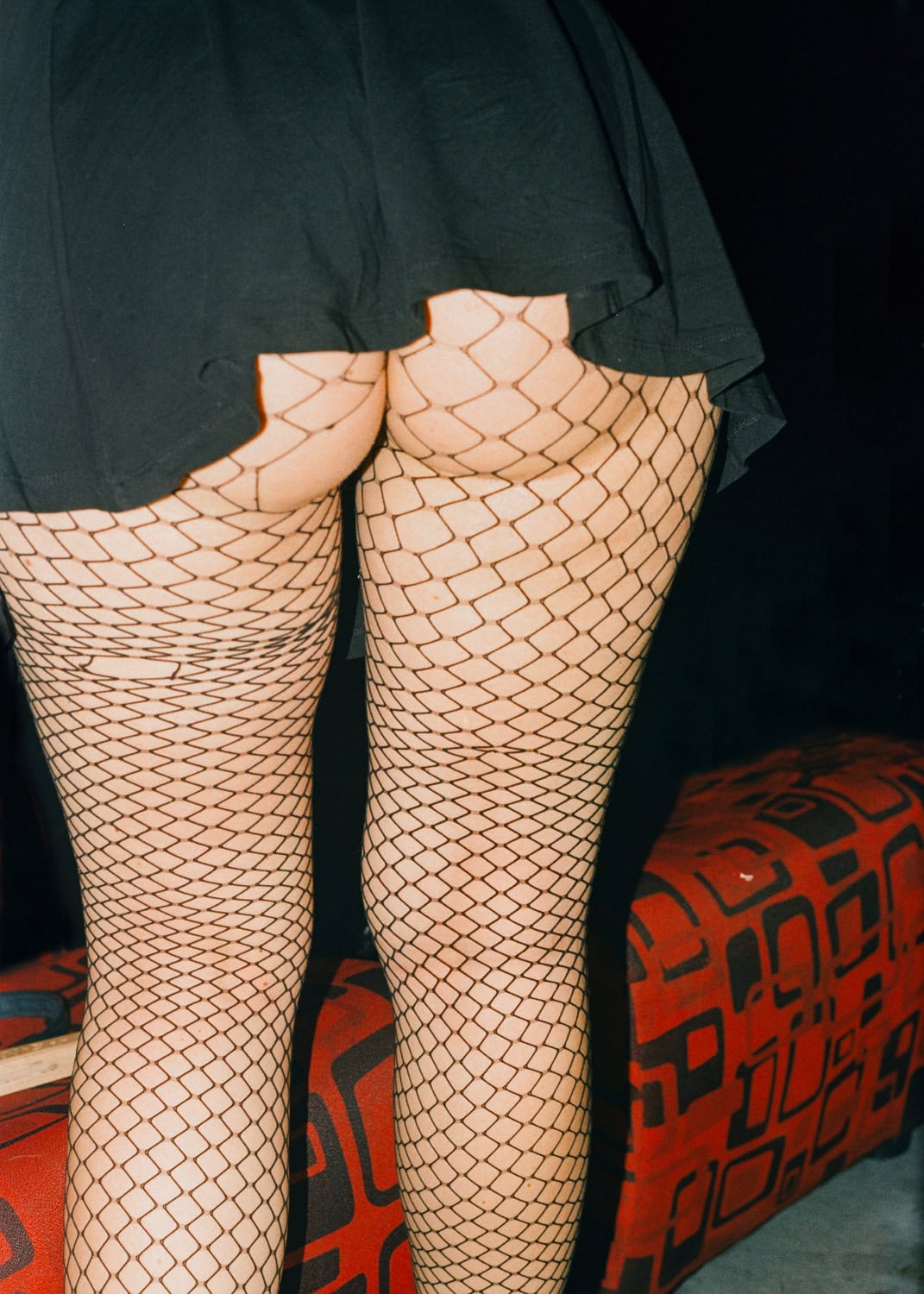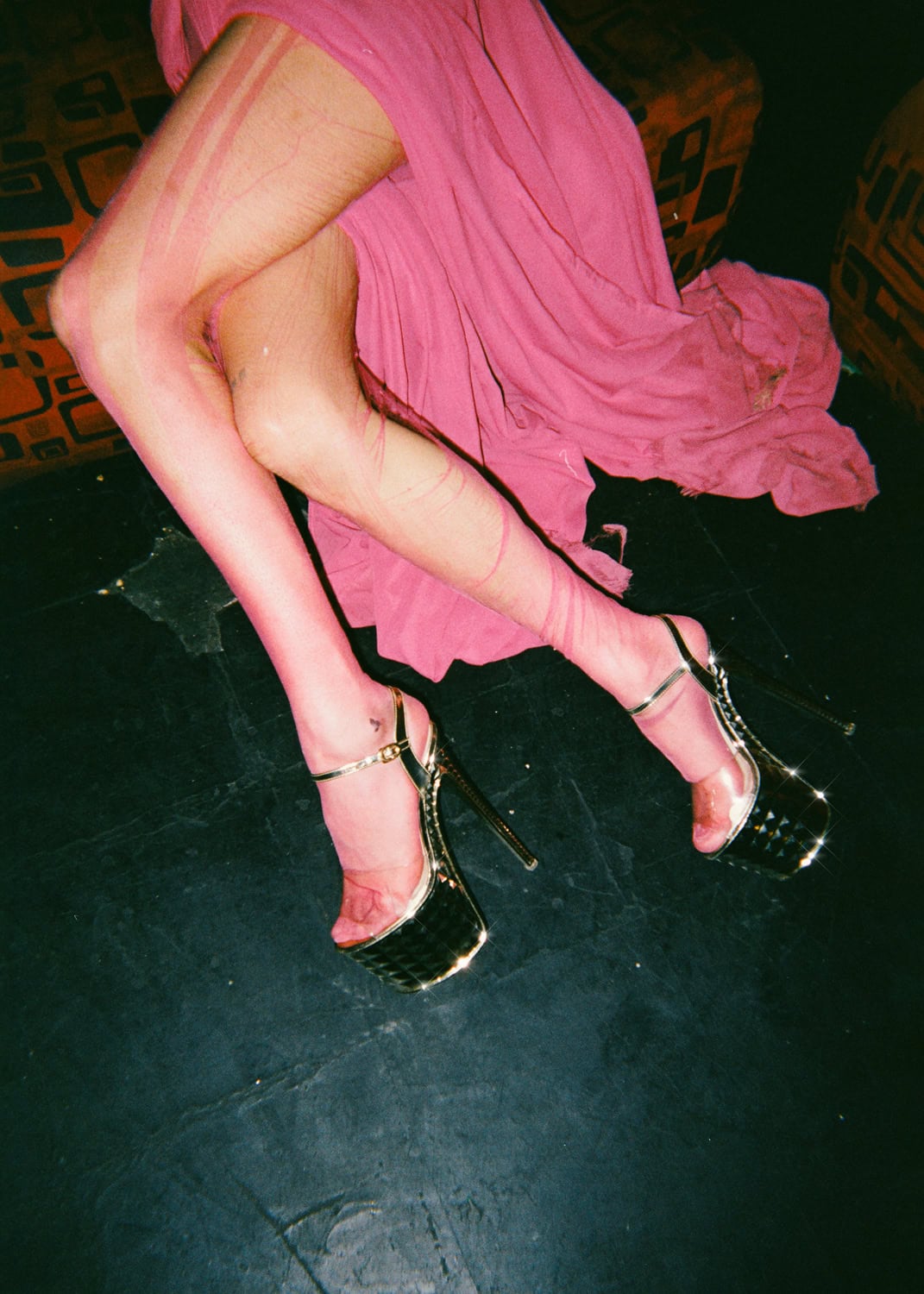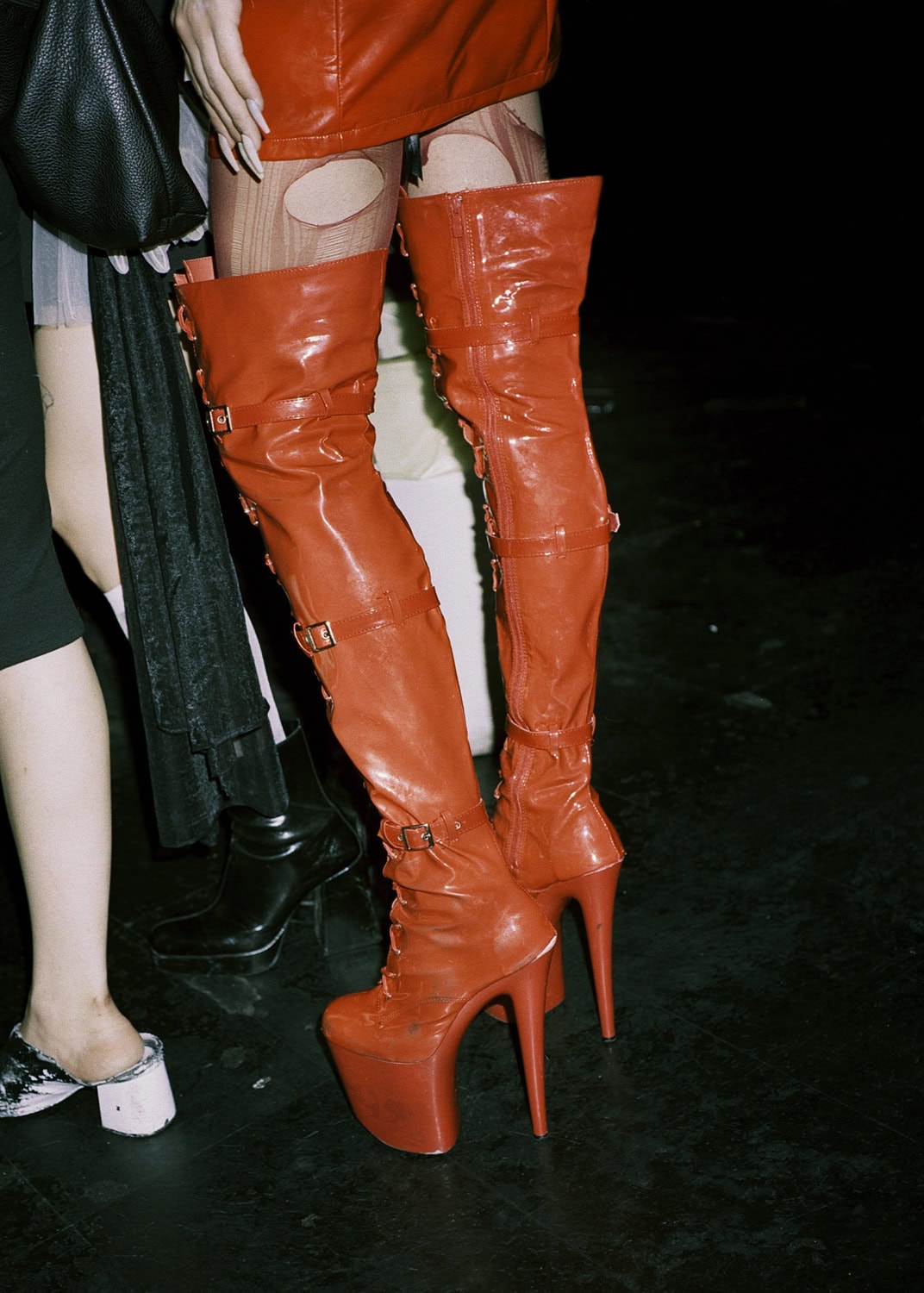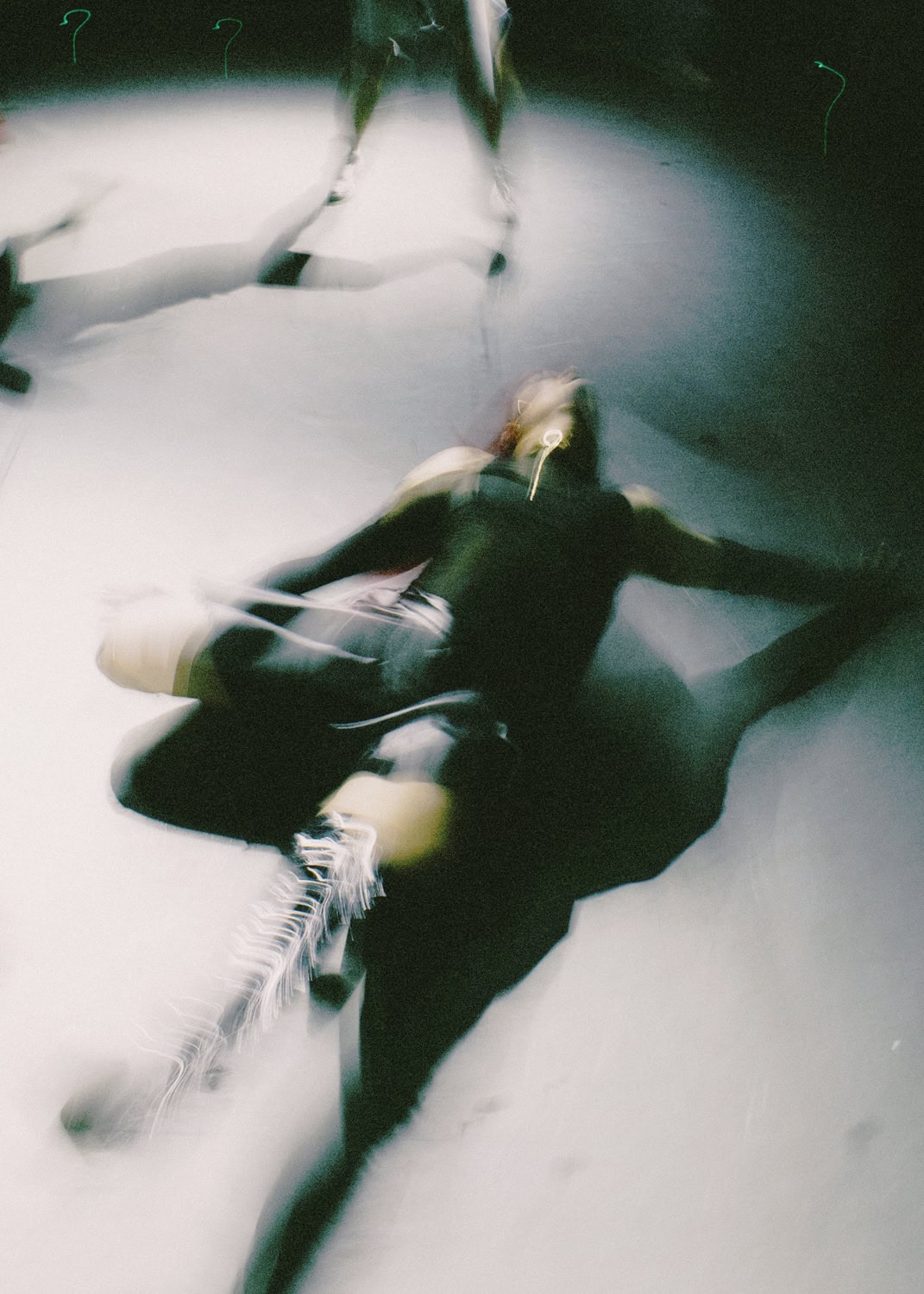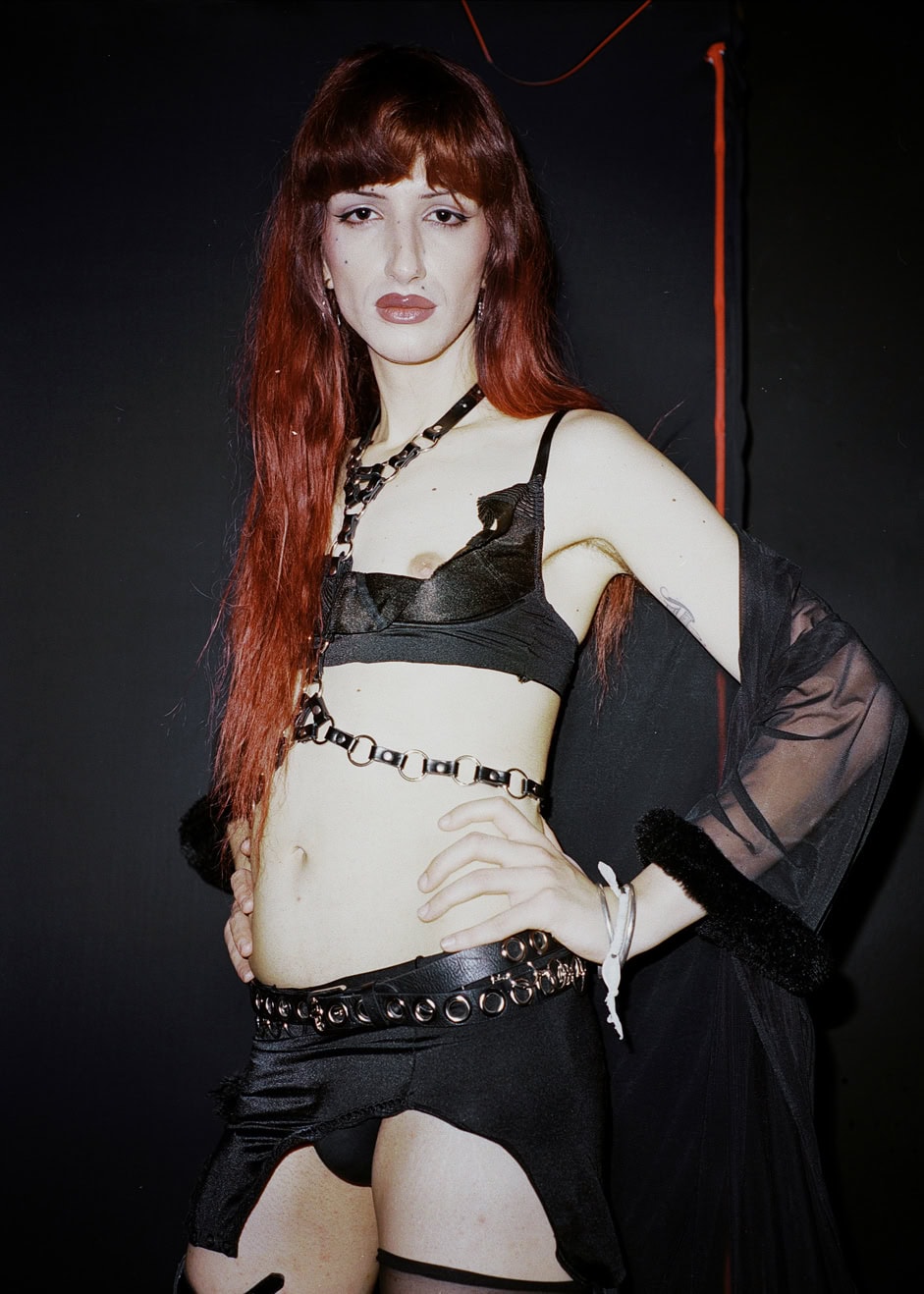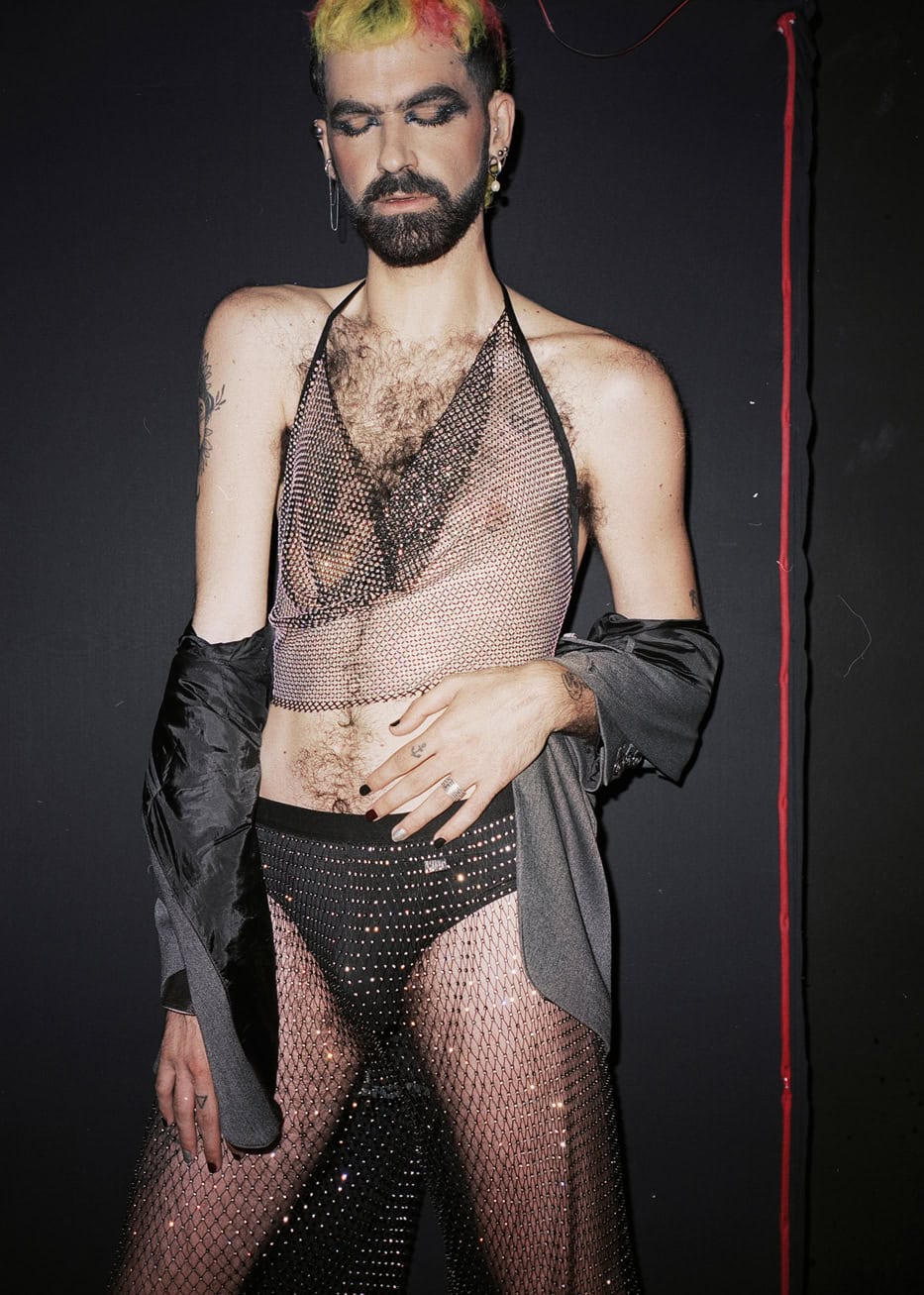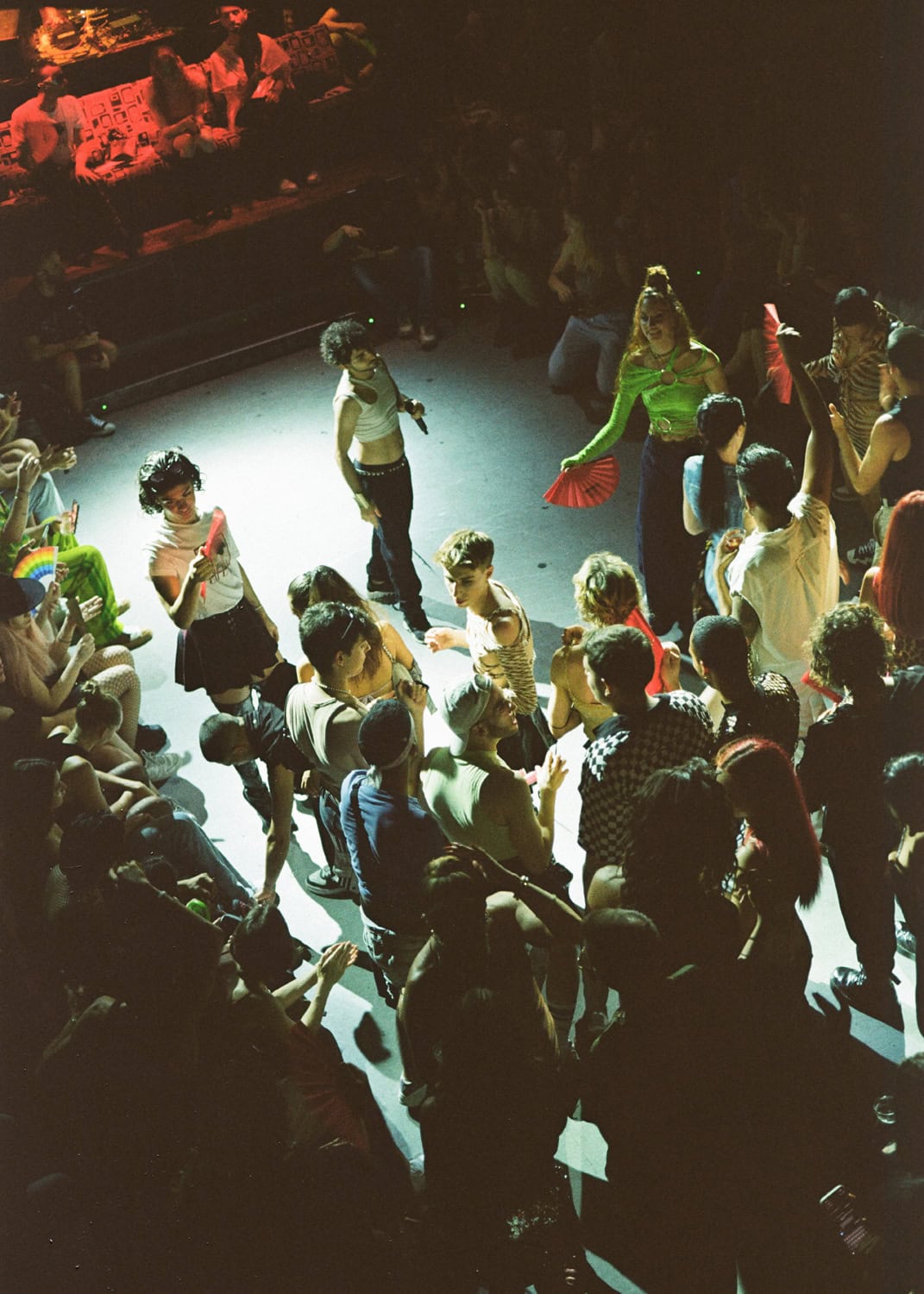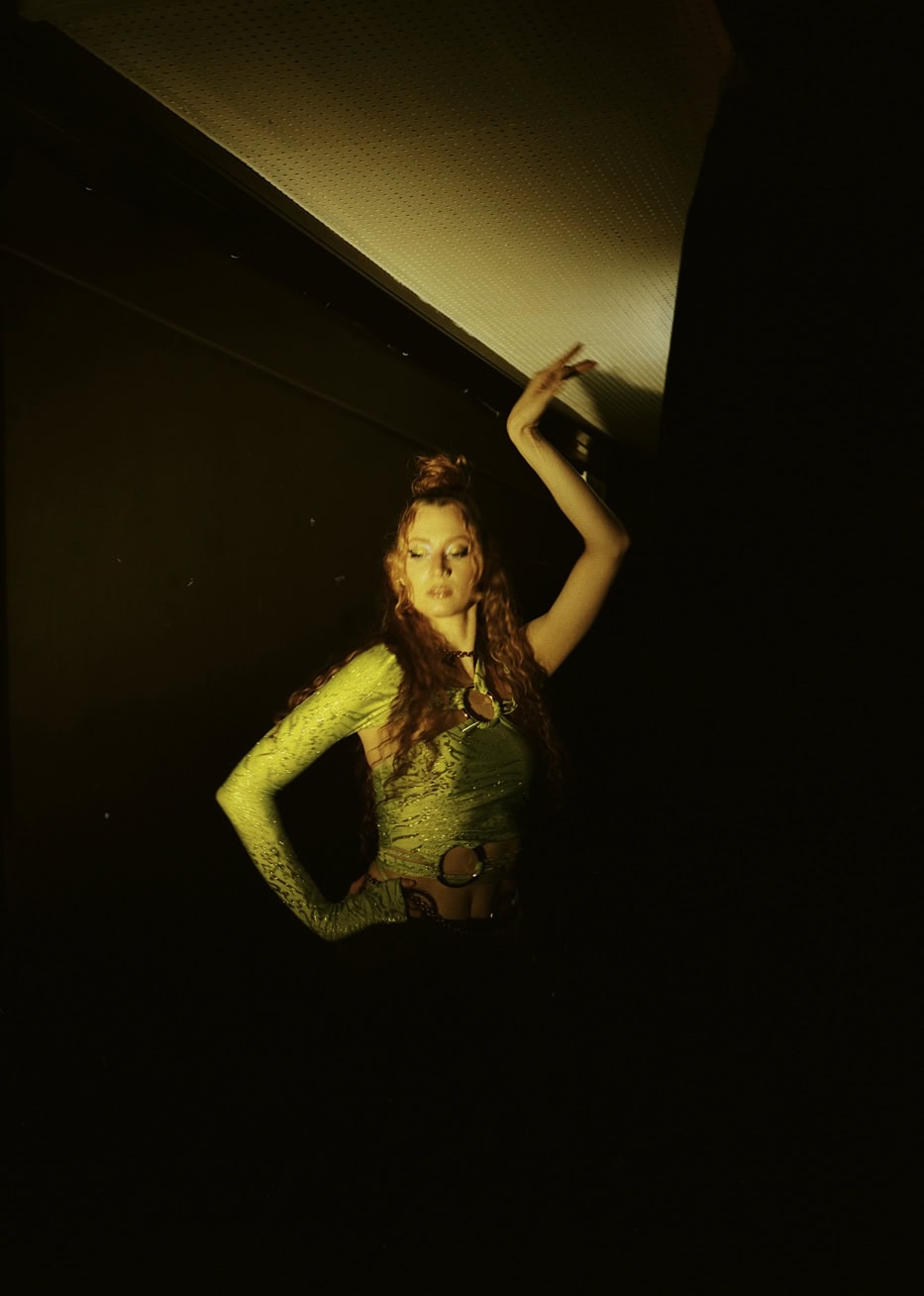C41 presents an interview with Mother La B. Fujiko Ninja by Vanessa Ruiz, accompanied by a photo reportage of Milan is Burning by Arianna Angelini and a docu-film by LEONE.
The glitter, the sky-high heels, the dramatic poses: this is what jumps out at you as soon as you enter the ballroom for the first time. It may seem superficial and frivolous, but it is the well-deserved culmination of the representation of a community that has fought for the self-determination of every one of its members. A community born on the margins of the oppressive New York society of the late 1970s, which was strongly discriminatory towards queers, blacks or Latinos. In this context, ballrooms were the exception: universes in which one could simply exist and be what he wanted.
Arriving at District 272, I felt intimidated by the spotlights of the catwalk and the stage that would later host the jury, but I pushed myself to participate anyway. After the walk, I felt all the eyes on me and my legs were shaking with adrenaline. But if there was something I didn’t expect, it was the genuine welcome of the unknown people around me.
The strength of this community is the support and love that can be felt in every embrace, even if given after clashes made in dance steps and beyond. Because ballroom is not only dance but also fight. Nothing is given away but earned with the hard work of people like Mother La B. Fujiko Ninja, Legendary Pioneer of the Italian scene, who protects her people like a true mother, whose strength has sent Milan up in flames.
VR: Dance has always been a part of your life until you became a true Legend and Pioneer in the ballroom scene. What elements made you passionate about this culture (made up of so much more than dance)?
MLBFN: My encounter with the ballroom scene was in New York, initially approaching it mainly through voguing. I think it fascinated me first and foremost because it is a dance that emphasises the personality and the message that the performer wants to communicate. It certainly disorientated me, then I realised how important it was to go beyond the inner difficulty, more than the technical ones, and deepen the personal path that this dance was showing me. Today, voguing is not the main focus for me, but the ballroom scene and the message it carries is. It pushes me every day to reflect on the society we live in, its constructs that cage us in, and to take a stand in the face of the changes I believe are necessary.
VR: How did the ballroom make the birth of Mother La B. Fujiko Ninja possible? What was Barbara like before her arrival?
MLBFN: I can say that Mother La B. Fujiko Ninja was already there for all intents and purposes before the ballroom. Perhaps it was in it that I found my optimal dimension and a fertile ground to explore my inner self, but also my artistic self. In this environment, I finally came to rest, being able to put down the roots of a personal (but also collective) path, by creating BBallroom.
VR: You are the reference point of the Italian scene, specifically for the iconic House of Ninja, the Italian Chapter. What does it mean to be the mother of a house? What is a house for you?
MLBFN: I started with House of Ninja in 2008 in New York with Archie, Javier and Benny Ninja. It was a pretty natural path for me to join them. I personally try to represent the house and make it grow here in Italy, where we currently have a large chapter with many new kids. Being a mother of a house is a big responsibility because you no longer just take care of yourself but you become a reference, both in terms of your ballroom life and your personal life. The house is a fundamental organism in which the scene can come to life, creating a safe place in which members can create strong connections. The thing I value most is, in fact, the interpersonal relationship that is created between them. In our house we try to decide everything together, to be united and welcome new members with the perspective of connecting at 100%. Because that’s what counts most—not so much the competition or the trophies. We are a true family: a family by choice, that gives you full support whenever you need it.
VR: How is individuality enhanced within a Ball?
MLBFN: Every ball, to be defined as such, has a number of categories. A full-fledged major ball has performance categories, namely those of voguing: we find the vogue femme, the old way, the new way—just to name a few. There are those related to fashion such as best dressed, designer delight and labels. Those more related to the appearance, like body and face, for example. Among the categories with more value, also from a historical point of view, are those linked to realness, in which those who perform try to replicate typical roles of the cis-hetero normative society. Milan is Burning, not being a ball but a related event, has fewer categories but makes more room for some specific ones for those approaching for the first time. In them, we find the wording virgin, for those who have never participated, or beginner, for those who have just started. This event is inspired by the Vogue Knights, weekly events that used to take place in New York and that now exist in the same way and are called OTA (open to all). There are truly many categories and facets: each of them is linked to the history of the LGBTQ+ community and represents the safe space in which to express oneself, that society, yesterday like today, does not offer.
VR: What role does fashion play?
MLBFN: Fashion has always been a great source of inspiration. From the very beginning, it was a ‘dream’ that, for many people, could only be realised in the magic of the ball. This is no longer the case, but there is certainly still a long way to go. I think that over the years it has been fashion itself that has taken inspiration from the ballroom. I also think that at this time, when you see a lot of interest—even commercial interest—in the scene, a combination has been created: more and more people are inspired by ballroom and create outfits at home with little money; at the same time, big brands are approaching this world and involving ballroom personalities.
VR: How do aesthetics and social commitment coexist?
MLBFN: Aesthetics and social commitment coexist because they are totally fused together. Aesthetics is a means of sending a message and the message, if it concerns the ballroom, is political. ALWAYS. The people who approach it purely out of aesthetic interest are also the ones who don’t last long and about whom we honestly care little.
VR: In what way can voguing be considered a form of fight? What did we fight for in the past and what do we fight for today?
MLBFN: The scene was born in the 70s-80s to be a safe place for the LGBTQ+, Latino and black communities. It was born to go against the issues of the time in regards to these people, allowing them to express themselves, perform and communicate how they truly felt. Many years have passed, but it is still necessary to talk about racism, homophobia, homo-transfobia, and sexism. Fortunately, Milan responds very well and understands the values behind our events. At first glance, there is a lot of performance, but beyond that, the Ballroom scene is mostly a political act. It is not just a dance, but a moment that tells the very deep roots on which it is based and has an essential meaning for those who attend them. Over the years, I have noticed that even people who were new to the environment, who were not familiar with its mechanisms, realised that something powerful was happening: they felt the energy of the situation.
VR: Thanks to you “Milan is Burning”. How did you make it happen?
MLBFN: It stems from a project I created a few years ago called “Pump the beat! Vogue the house down!!”, open to anyone who wanted to be part of it. The problem at the time was that there were very few of us and a local reality like the one we wanted was not yet ready. I have to thank the people who tried with me to shake things up like Blanco, Plastic, and Le Cannibale. This project was reborn after the pandemic because I saw great interest and, working with other exponents of the Milanese scene, we decided to start this project in Milan, but also in Bologna, where it remained under the name “Pump the beat!”. Participation was crucial: thanks to the support of the people of the scene, whom I would like to thank, Milan is now ready.
VR: What achievements are you most proud of?
MLBFN: I honestly don’t know, I think I’m proud of all of them. Certainly, I am proud of my House and all the people who are part of it, certainly of the Pioneer and Legend titles, which for me have meant great recognition from the international scene for the path I have taken over the years. Recently, I am very proud of the success that realities like “Milan is Burning” and “Pump the beat!” are having—a sign that the ballroom community is growing and the interest and support are amazing. Years ago, realities like these were unthinkable, but today they work very well. That is a sign that the Italian scene is sowing and reaping well.
VR: If I had to ask you the same question in a year’s time, what would you say?
MLBFN: The same question in a year’s time? I don’t know, I’m not a goal-planning person. I go with the flow of what feels right to me and my instincts about how to invest time and energy in what I FEEL to be the right people and situations. I am more interested in the path than in the result. We can talk again in a year and maybe I will be able to answer you… 🙂

